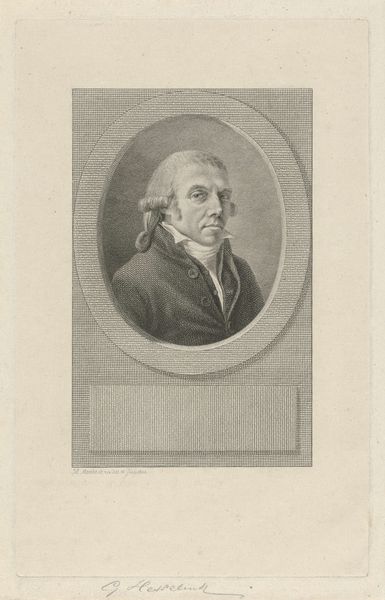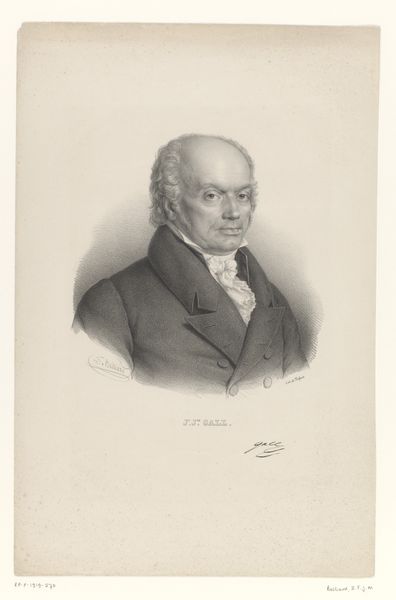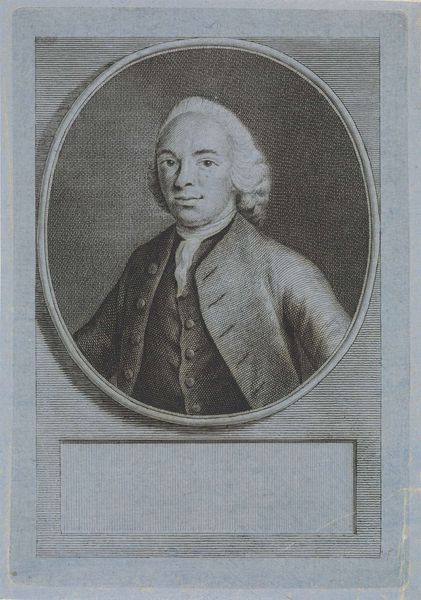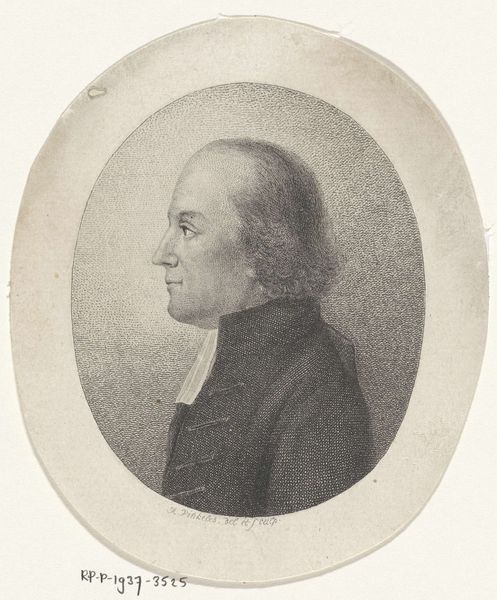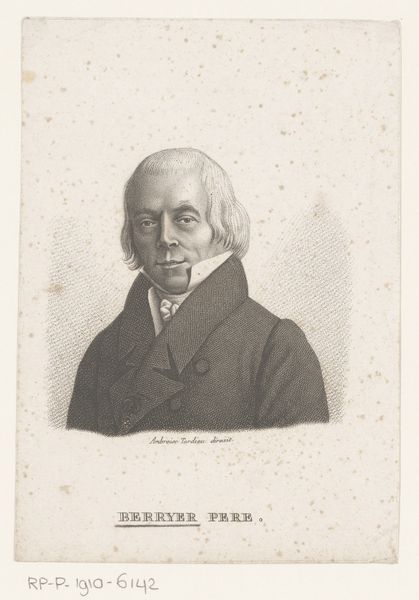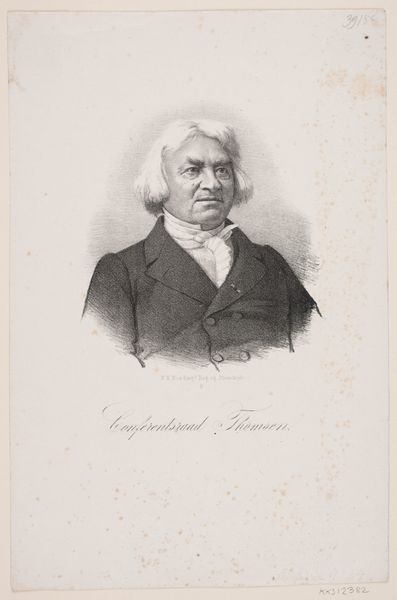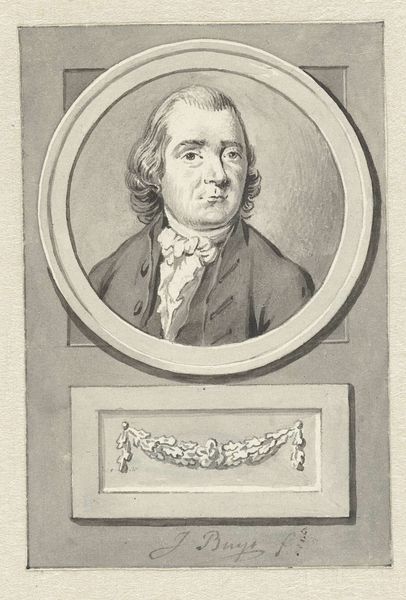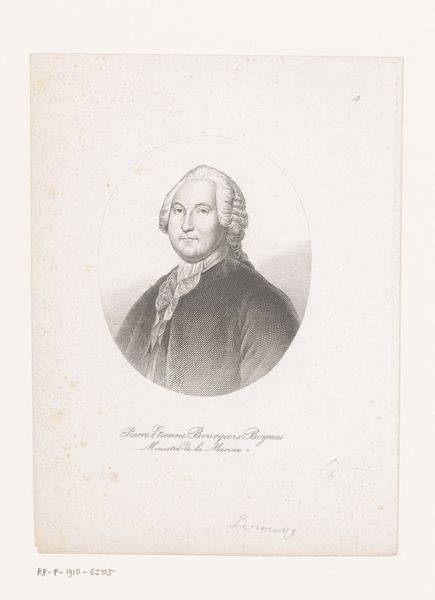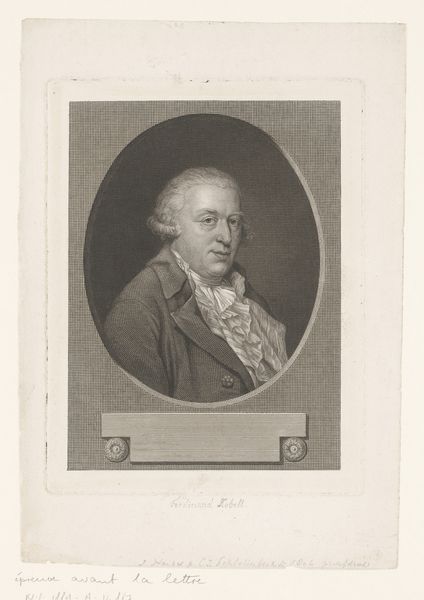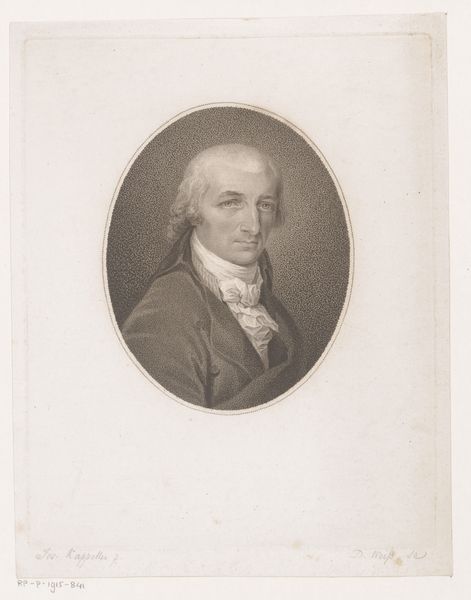
engraving
#
portrait
#
neoclacissism
#
caricature
#
portrait drawing
#
history-painting
#
engraving
#
realism
Dimensions: height 268 mm, width 175 mm
Copyright: Rijks Museum: Open Domain
Curator: This engraving presents a portrait of the poet Giancarlo Passeroni. The artwork has been dated from around 1753 to 1803, and the identity of its author is yet undetermined. What’s your initial take? Editor: He looks like a man used to being listened to! There’s something about the angle, the slight puffiness of the face, that exudes authority…but maybe a hint of vulnerability, too? Curator: Certainly. Consider how portraiture of the time served as a form of social currency. Displaying such an image was a clear statement. Passeroni's reputation as a prominent poet would solidify the reason he was an ideal subject of art at the time. Editor: I wonder about the power dynamics at play. A poet immortalized, but by whose hand, and for what audience? Was this intended as a tribute, a statement of artistic prowess, or something more complex? He is presented in such a ‘matter of fact’ manner, so to speak. Curator: It raises pertinent questions about representation. Portraits often immortalize their subjects. Looking through a socio-historical lens, prints like this would allow for wide distribution, and allow the Poet's likeness to travel extensively. This further solidifies Passeroni as a celebrity within Neoclassical circles. Editor: Absolutely. It connects with how the art world elevates and centers particular voices, usually those of privilege. A face like this tells more than a simple life story; it echoes power, position and possibly, unspoken social expectations. Curator: Indeed. The very act of immortalizing someone through art has undeniable political implications when one considers who gets remembered and who is forgotten. Editor: Right. So next time we walk past another portrait, we need to keep questioning the reasons for it and the choices around who gets that privilege and for what specific political or social goals. Curator: Well said! These questions on what the painting can reveal about social dynamics give new appreciation to an image that might at first seem like simply a record of likeness.
Comments
No comments
Be the first to comment and join the conversation on the ultimate creative platform.
